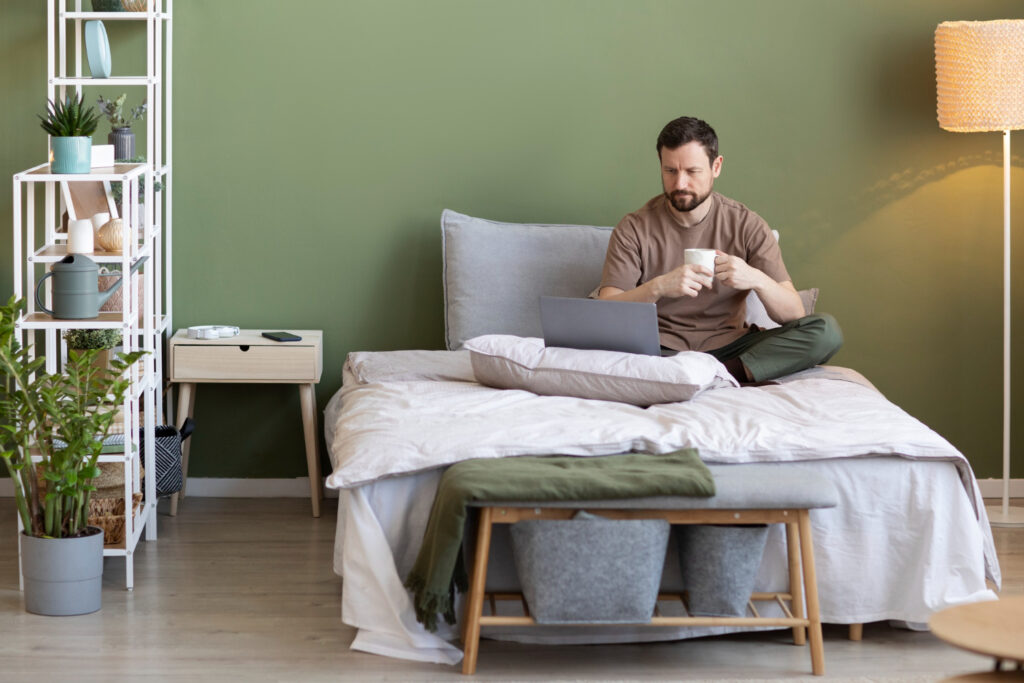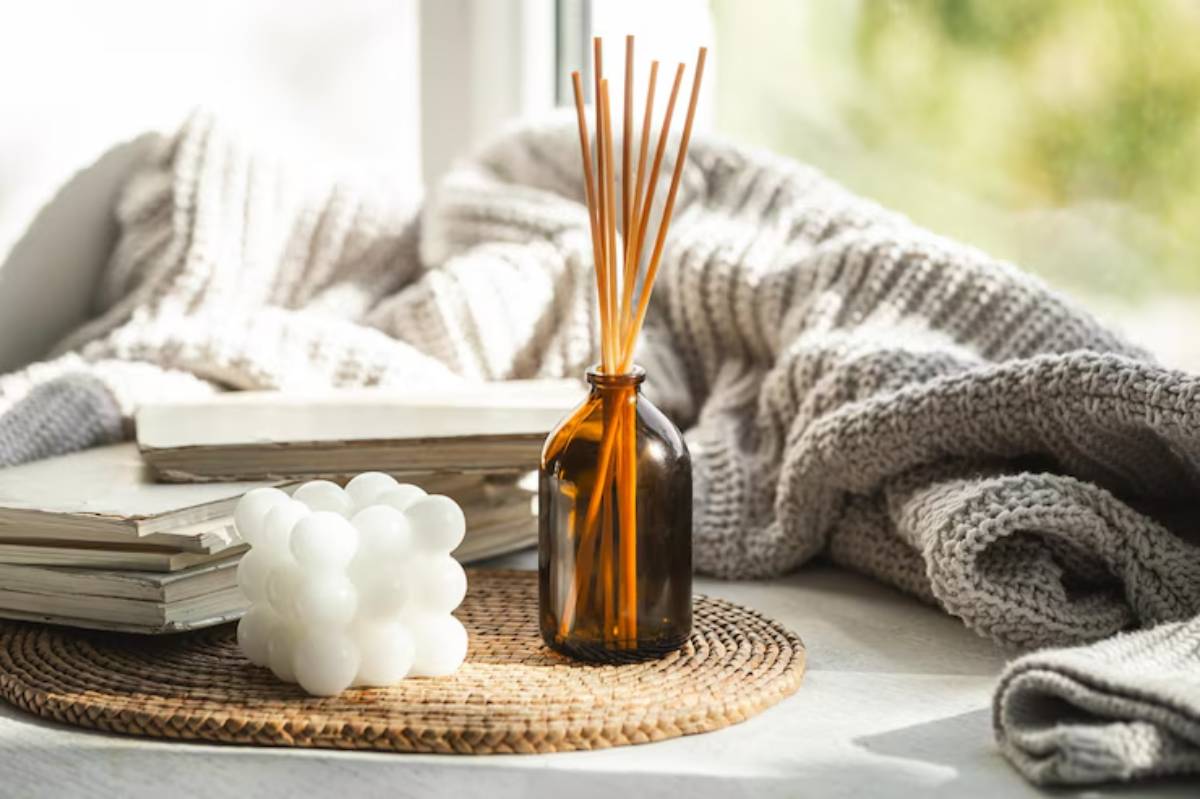The Health Blog

Creating a Sleep-Friendly Bedroom Environment
It’s often said that sleep starts in the mind. But sometimes, it actually starts with your surroundings.
Think about it. If a room is too bright, too hot, too noisy, or cluttered with distractions — how easy is it to fall asleep there? Not very.
A truly sleep-friendly bedroom isn’t about having expensive mattresses or hotel-style décor. It’s about creating a space that tells your body, “You’re safe. You can switch off now.”
And the best part? It doesn’t take a full makeover to get there. Just a few thoughtful changes can turn even the most chaotic room into an optimal sleep environment.
Let’s explore how.
The Science Behind Sleep and Surroundings

The body is wired to respond to environmental cues. Light, temperature, sound, and even smell all play a role in telling the brain whether it’s time to be alert — or time to rest.
This is part of the circadian rhythm, the internal clock that runs on a 24-hour cycle. When a space supports that rhythm, sleep tends to come more naturally. When it disrupts it, sleep struggles follow.
So if falling asleep feels harder than it should, the bedroom might need some attention.
1. Darkness: The Foundation of a Sleep-Ready Space
Light is one of the strongest signals to the brain that it’s time to be awake. Even small amounts — like a glowing phone screen or the hallway light — can reduce melatonin production and delay sleep.
Creating a dark space helps restore the body’s natural rhythm. For anyone building a natural sleep setting, this is step one.
Try this:
- Use blackout curtains or blinds to block outside light
- Cover or turn off glowing electronics
- Opt for soft, warm bedside lighting (not blue-toned bulbs)
- Keep a sleep mask nearby if full darkness isn’t possible
The darker the room, the stronger the body’s signal to rest.
2. Temperature: Cooler Is Better
The ideal room temperature for sleep sits somewhere between 16–19°C (60–67°F). This may sound chilly, but it mirrors the body’s natural drop in temperature as it prepares for sleep.
If a room is too warm, it can interrupt deep sleep. Too cold, and the body stays tense trying to stay warm.
To find that sweet spot:
- Use breathable bedding (cotton, linen, or bamboo)
- Layer blankets instead of using one heavy one
- Keep windows slightly open when weather allows
- Adjust the thermostat or use a fan to control airflow
The goal is comfort without overheating — an essential feature of any optimal sleep environment.
3. Sound: Soften the World Around You
Silence is golden… but it’s not always realistic. For light sleepers or those in noisy areas, ambient sound can make or break a night’s rest.
While sudden or sharp noises disrupt sleep, gentle sounds can actually help the brain relax. A consistent, soft background noise can cover up disruptions and encourage deeper rest.
Sound solutions include:
- White noise or pink noise machines
- Nature sounds (rain, ocean, forest)
- Earplugs for full silence
- Soft instrumental music with no lyrics
- Carpet or rugs to absorb sound in echo-prone rooms
The quieter — or more controlled — the soundscape, the more sleep-friendly the room becomes.
4. Scent: The Subtle Power of Smell

It’s easy to overlook, but scent plays a powerful role in relaxation. Certain aromas have been shown to calm the nervous system and support restful sleep.
Creating a natural sleep setting often involves weaving in scent in gentle, unobtrusive ways.
Sleep-enhancing scents include:
- Lavender — well-known for its calming effects
- Chamomile — associated with soothing and settling
- Cedarwood — grounding and earthy
- Sandalwood — often used for relaxation and focus
Ways to add scent:
- Essential oil diffusers (set on a timer if possible)
- Pillow sprays with natural ingredients
- Dried herbs or potpourri near the bed
- Scented candles (unlit — safety first)
Keep it subtle. The goal is a hint of scent, not an overwhelming perfume.
5. Declutter: Clear Space, Clear Mind
A messy room can make it harder to relax — even if sleep isn’t the immediate concern. Clutter sends a visual signal that there’s still work to do. That subtle tension can linger at night.
No need for minimalism. But creating some order in the space helps invite stillness.
Start with small actions:
- Clear off bedside tables
- Keep clothes off the floor or bed
- Store devices and chargers out of sight
- Use soft baskets or under-bed boxes for storage
A room that feels calm, clean, and organised sets the tone for better rest.
6. Comfort: The Basics Still Matter

No fancy advice here — just honest questions:
- Is the mattress supportive and not sagging?
- Are pillows comfortable and suited to your sleep position?
- Do sheets feel nice against the skin?
- Is there enough room to move without feeling cramped?
A sleep-friendly bedroom doesn’t have to be luxurious. But it should feel good to lie down in.
If buying new bedding isn’t an option, even small upgrades help — a new pillow, a soft throw, or rearranging furniture to improve flow.
7. Keep Work and Screens Elsewhere (When Possible)
It’s tempting to bring laptops to bed or scroll phones right before sleep. But blending work and rest spaces sends mixed signals to the brain.
If possible, make the bedroom a screen-free, task-free zone. That helps the brain associate the space with rest — not stimulation or stress.
If screen use is unavoidable:
- Use blue light filters
- Keep brightness low
- Set a screen cut-off time at least 30–60 minutes before bed
- Keep chargers out of arm’s reach to avoid late-night scrolling
These are core sleep hygiene practices, and they start with setting firm boundaries inside the space itself.
Creating a Sleep Sanctuary: It Doesn’t Take Much
Transforming a bedroom into a natural sleep setting isn’t about perfection. It’s about intention.
The key isn’t to follow a checklist rigidly, but to build a space that makes the body say, “I can rest here.” That feeling — of safety, quiet, comfort — is what supports long, high-quality sleep.
Small shifts add up. One darker corner. One less buzzing phone. One cooler breeze. Over time, those small adjustments reshape how the brain and body respond to the bedroom.
Make the Bedroom Work For You
Sleep isn’t just something that happens at night. It’s shaped by how the body is supported, emotionally and physically, in the space where it sleeps.
A sleep-friendly bedroom helps lower stress, ease tension, and invite the kind of rest that truly restores. And it doesn’t need to be perfect to be powerful — just consistent, intentional, and soothing.
It’s about aligning the environment with the body’s natural rhythms. And when that happens? Sleep becomes less of a struggle and more of a ritual.









